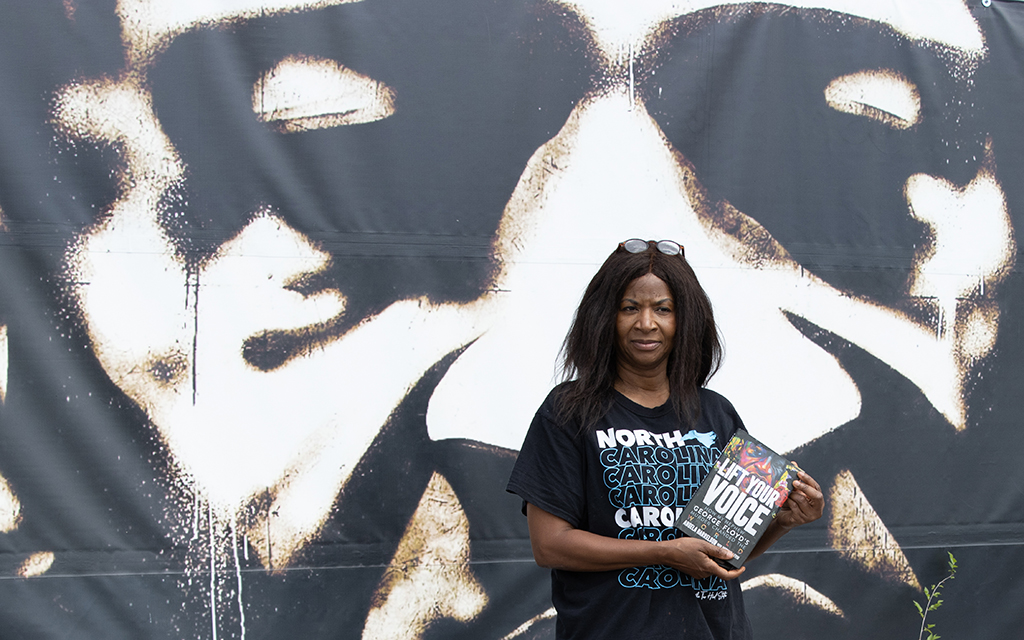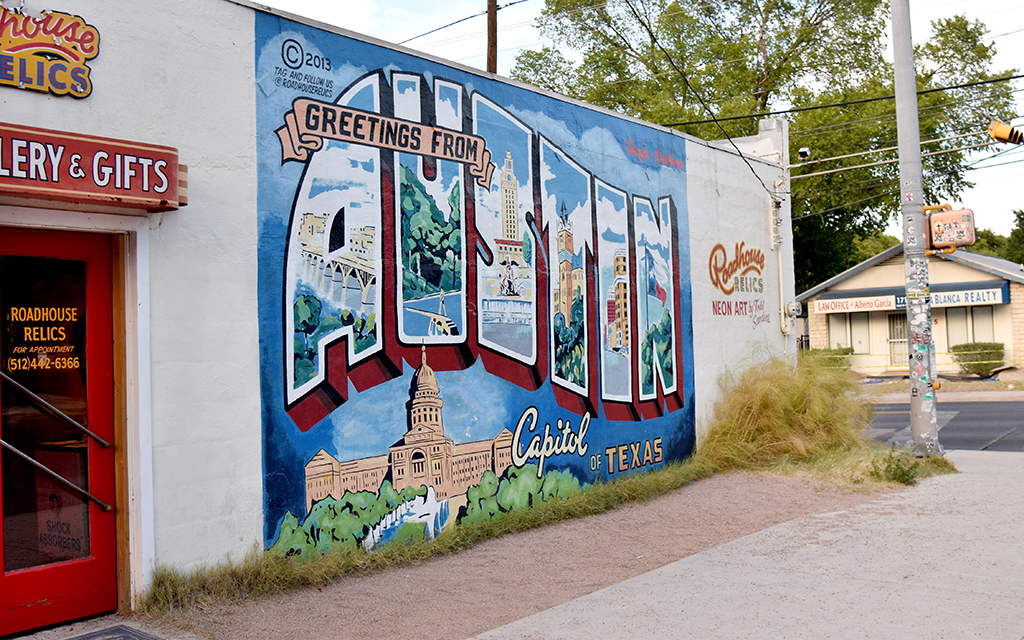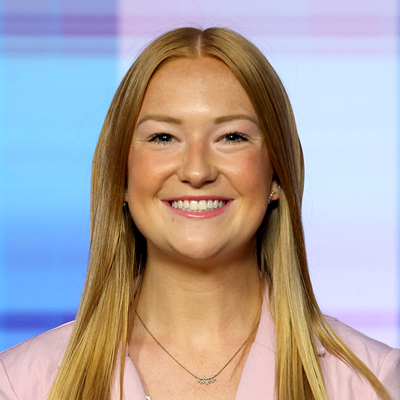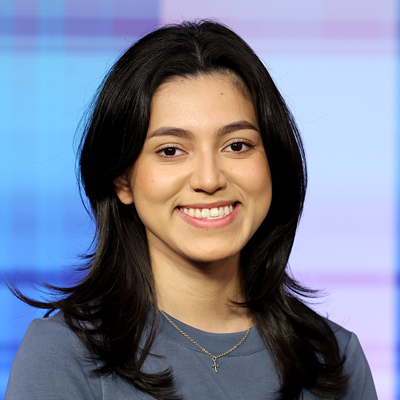
‘Breaking the chain’: How George Floyd Square sparks change
Sept. 23, 2022
MINNEAPOLIS – People here have elevated the intersection of 38th Street and Chicago Avenue into a sacred space, the point where bystanders’ videos exposed the truth of systemic racism in the U.S. People from across the globe come to pay their respects, in memoriam to where George Floyd repeatedly begged for his life: “I can’t breathe!”
Floyd’s murder on May 25, 2020, spurred millions around the world to take to the streets, protesting police injustice toward Black people and other people of color. Residents and others have worked to preserve the intersection where he died – it’s a proposed permanence, a memorial that neighbors and protesters protected with their bodies, cars, trash cans, sticks, whatever they could find.
This is now George Floyd Square. It’s marked by four 10-foot-tall steel fists and a 12-foot-tall fist in front of Cup Foods. The square is lined with more than 5,000 creative expressions of pain and hope, including several murals.
The square is overseen by the nonprofit George Floyd Global Memorial. The woman holding it all together is Floyd’s aunt, Angela Harrelson.
On Saturdays, Harrelson visits the memorial with a smile, standing in the center waiting to greet visitors from across the globe. The 60-year-old takes pictures with visitors and posts most of them on social media.
She said it’s what George Floyd would have done.
“He was one of the kindest, gentle human beings there was, he would give you his last,” Harrelson said. “That is what the world needs to know, that he was a human being. It was God’s choice to use him for the message of change.”
The global memorial gives Harrelson and others the ability to share information about the square and the meaning behind it. The nonprofit, led by Harrelson and Jeanelle Austin, works to preserve and conserve stories of injustice. Their goal is to create a space where people can pay respect, grieve and be a voice for racial justice.
“We’re really trying to get people to understand that this is a place where people have died, and this is a place where people have grieved, and this is a place where people have lifted up their voices in the pursuit of Black liberation,” Austin said. “So what does it mean to hold that and to allow that to transform you, to go home and do something different?”
Harrelson has found strength in others’ support for the memorial.
“This is what community looks like. This is what we want,” she said. “We want to be the role model for other communities because in some Black communities, crime is against one another. But what I saw here was unity that the Black and brown communities haven’t had in a long time. And so I want this to be the pillar of what community can look like.”
Austin wants the world to know that George Floyd Square is a place of protest. A disruption to business as usual, it’s meant to signal that something is wrong that needs to be made right.
Austin said the question visitors most often ask her is when a permanent memorial to Floyd will be erected.
“My response is always, ‘When will they stop killing Black people?’”
The nonprofit focuses on the voices of the people, ensuring that the stories they’re telling don’t get lost, Austin said.
“Everybody is called to bring their gifts to this movement, and to bring their gifts to this moment in time to help us lead our country more toward justice and equality,” she said.
To reach justice and equality, Harrelson said, you have to start with the police.
“This is the issue that we’re having, and we’re having that issue because the police community do not see us as human beings,” she said. “They see us as second class citizens, and in slavery times they saw us as property.”
Finding that leadership to speak up when something is wrong is important to changing policing culture, she said.
“It’s a culture that they have set, they have taken some type of unwritten oath,” Harrelson said. “Don’t see nothing, don’t say nothing. How are they any different from the gang culture on the street?”

George Floyd Square in Minneapolis on Thursday, July 7, 2022. The square at 38th Street and Chicago Avenue is lined with more than 5,000 creative expressions of pain and hope, including several murals. It provides a space where people can pay respect, grieve and be a voice for racial justice. (Photo by Diannie Chavez/News21)
Then-police Officer Derek Chauvin, who knelt on Floyd’s neck for more than nine minutes that fateful day in 2020, was convicted of two counts of murder and one count of manslaughter. He was sentenced to 22.5 years in prison. Three other former officers have been convicted of violating Floyd’s civil rights.
Harrleson said the other police officers should have stopped Chauvin’s cruelty.
“I know they knew inside that wasn’t right,” she said. “This man is dying in front of their eyes, but something inside of them immobilized them, paralyzed them to the point that they couldn’t make a decision. They couldn’t say stop.”
If not for 17-year-old Darnella Frazier’s viral video of the murder, Harrelson said, her nephew would have been just another Black man killed by police and nobody would know why.
“She was so strong, because she held that video and she stood there for over 10 minutes,” Harrleson said. “She did not get distracted, something just told her to hold it. And she did, and her video changed the world.”
Harrelson hopes for more police reforms and is optimistic as she continues to fight in honor of her nephew’s memory.
“When he died, I miss him, I can’t even say I wish it was someone else,” she said. “To wish it was someone else would just be awful, cause I don’t want nobody going through it.”
Still, she said, the guilty verdicts showed that her nephew’s death, though horrific and painful, made a difference. That means there’s hope.
“It’s like the chain’s broke and people just ran through the door. It’s like the Black and brown community just ran, and the Indigenous, they couldn’t stop running,” Harrelson said. “It’s like we were free, this message, now people believe us. We see these beautiful white people coming from around the world putting their stamp on it and willing to walk with us and to hold signs that said Black Lives Matter and to acknowledge their white privilege. That’s powerful, that’s powerful, that’s powerful.”
Come back on Oct. 3, when we start publishing the main News21 “In Pursuit” project.
Our content is free to use. If you want to republish this story, find our terms of use here and download the text story and assets.


